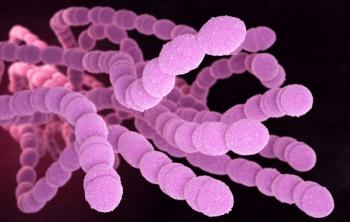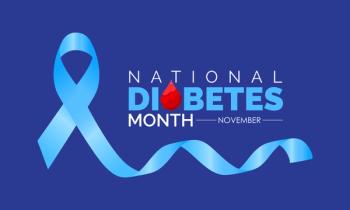
Study: Most Children Do Not Receive Interventions Reducing Asthma Exacerbations Despite Effectiveness
Key Takeaways
- GCPAs, including asthma reviews, management plans, and inhaler checks, initially high, declined over time in children with asthma.
- Older children, males, and those with recorded BMI were more likely to receive GCPAs, while those in deprived areas were less likely.
The intervention methods—annual asthma reviews, inhaler technique checks, and asthma management plans—were most effective when performed in the same visit.
When minimizing the risk of asthma exacerbations, guidelines recommend that good clinical practice activities, scheduled asthma reviews, inhaler technique checks, and asthma management plans can be significant in helping patients reduce their risks. Authors of a study published in Chest evaluated which children were less likely to receive “good clinical practice activities” (GCPAs)—which included asthma reviews, asthma management plans, and inhaler technique checks—as well as their effectiveness at reducing exacerbations.
The study population was gathered from the Clinical Practice Research Datalink (CPRD), a database of UK primary care medical records and the largest longitudinal health care database globally that covers about 20% of the UK. CPRD data has been determined to be broadly nationally representative of the UK population regarding age, sex, and ethnicity. This study included children aged 5 to 16 years who were identified between January 2004 to January 2021. These children had at least 2 asthma codes within 2 years and had a minimum of 1 year of data recorded prior to study enrollment as well as a follow-up at 12 months or later.
In addition, self-controlled case series (SCCS) methodology was used to assess the effectiveness of each GCPA over a 12-month period (split into 2 periods that were 6 months in duration). According to the authors, recurrences of exposure outcomes were needed to be independent, therefore, the first ever asthma exacerbation was included in the study. The outcome should not change the probability of exposure. Additionally, a 31-day pre-exposure period was included to accommodate for the possibility of asthma exacerbations leading to a provision of GCPA.
A total of 126,483 children were included in the study with a mean follow-up of 4.3 years. Approximately 56% of children received an annual asthma review in the first-year post-asthma diagnosis; however, this dropped to about 45% in following years. Asthma management plans were documented as provided to about 42% of children in the first year following diagnosis but declined to 30% after. Additionally, the authors observed that inhaler technique checks were conducted for 59% of children in the first-year post-diagnosis, but this also decreased to about 40%. The authors noted that after the first year of diagnosis, about 9% (n = 11,457) of children received any of 2 GCPAs on the same day and only 8% (n = 10,035) received all 3 on the same day.
The authors observed that children who received a GCPA were slightly older, male, and more likely to have a recorded body mass index (BMI), a higher proportion with respiratory symptoms and more likely to have received an inhaled corticosteroid (ICS) prescription. The authors also saw that atopy and previous exacerbations did not distinguish those that did and did not receive a GCPA.
Children who were aged 12 years and older were about 25% more likely of receiving an inhaler technique check compared with compared with those aged 5 to 9 years (OR = 1.25, 95% CI 1.22-1.29). Additionally, children who resided in more deprived areas were about 16% and 5% less likely to receive an annual asthma review (95% CI 0.81-0.87) and inhaler technique check (95% CI 0.91-0.98), respectively, but were 14% more likely to receive an asthma management plan (95% CI 1.10-1.18).
Children without a recorded body mass index (BMI) had reduced odds of about 60% of receiving any GCPA. More specifically, those with a BMI categorized as obese had slightly less odds of receiving an annual asthma review (OR = 0.92, 95% CI 0.87-0.96), inhaler technique check (OR = 0.84, 95% CI 0.80-0.88), or asthma management plan (OR = 0.92, 95% CI 0.88-0.97). Children who were prescribed ICS or a short-acting beta agonist were more likely to receive GCPAs.
Further, for the SCCS models, there were 6948 patients for asthma annual review, 6469 for inhaler technique check, 4624 for asthma management plan, and 3643 for all 3 GCPAs during the consultation. According to the authors, standalone annual asthma reviews were associated with a 9% significant decrease in exacerbations only during the first 6 months (0-6 months: IRR = 0.92, 95% CI 0.85-1.00, p = .034; 7-12 months: RR = 0.93, 95% CI 0.83-1.03, p = .161). Additionally, standalone inhaler checks were not associated with decreases in exacerbations, but a small non-significant decrease was observed (0-6 months: IRR = 0.92, 95% CI 0.84-1.00, p = .065; 7-12 months: IRR = 0.92, 95% CI 0.82-1.03, p = .174). Asthma management plans were associated with a significant decrease in exacerbations, which was persistent across the 12-months post-activity (15%; 0-6 months: IRR = 0.87, 95% CI 0.79-0.97, p < .01; 7-12 months: IRR = 0.83, 95% CI 0.73-0.97, p < .01). All 3 GCPAs during the same consultation was associated with the greatest decrease in exacerbations (30%), and like asthma management plans, this persisted past the 12- month duration (0-6 months: IRR = 0.76, 95% CI 0.68-0.85, p < .0001; 7-12 months: IRR = 0.69, 95% CI 0.60-0.81, p < .0001).
Limitations of the study include lack of details on intervention methods, missing BMI values, and the inability to evaluate outcomes other than exacerbations because of the available data. Additionally, the authors noted that the agreement between the real-world, population-level clinical practice data and limited randomized control trial data validates current guideline recommendations.
REFERENCE
Khalaf Z, Saglani S, Bloom CI. Implementation and effectiveness of guideline-recommended clinical activities for children with asthma: population-based cohort. Chest. 2024. doi:10.1016/j.chest.2024.10.036Top of FormBottom of Form
Newsletter
Stay informed on drug updates, treatment guidelines, and pharmacy practice trends—subscribe to Pharmacy Times for weekly clinical insights.


















































































































































































































